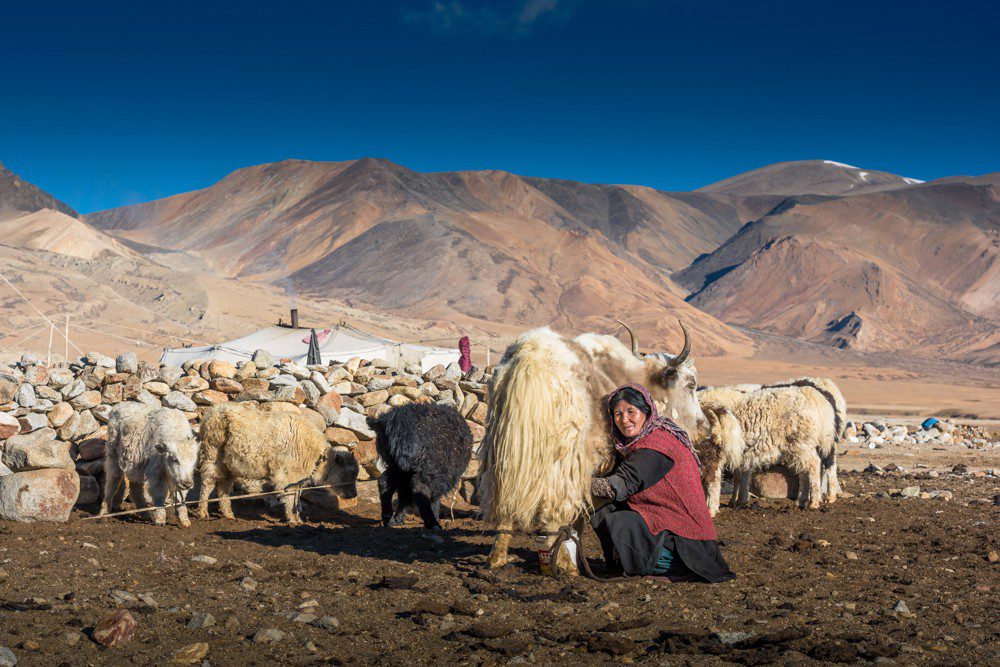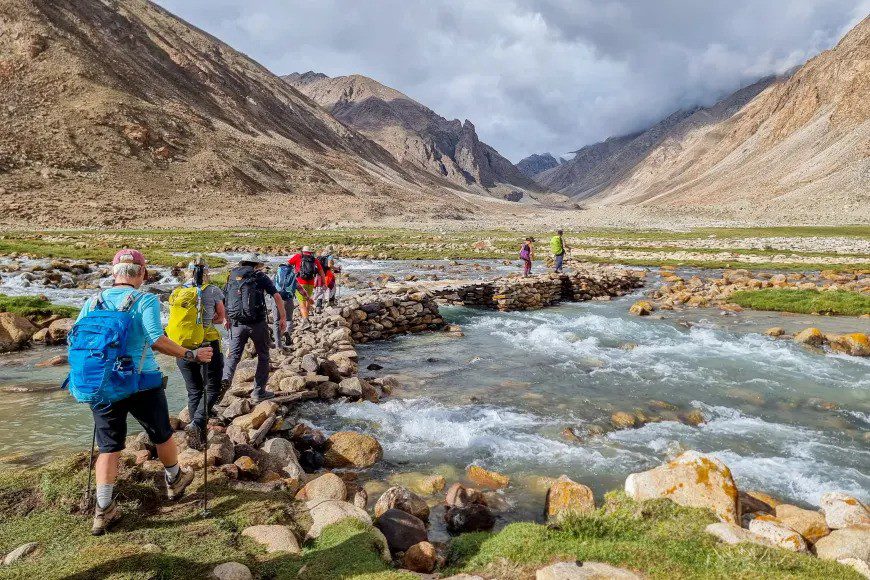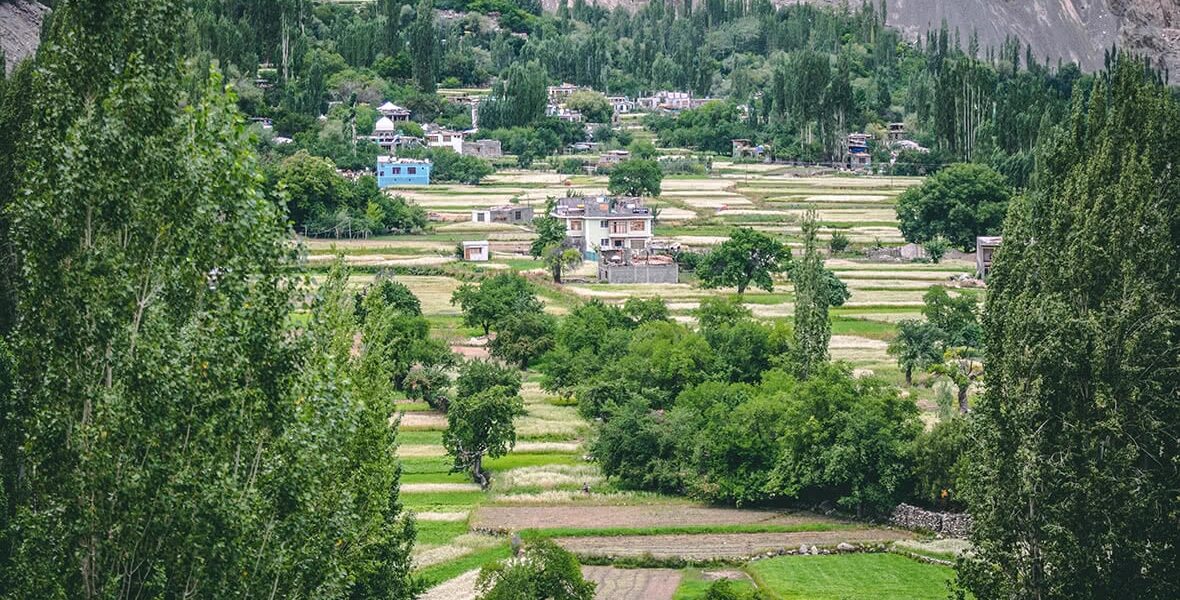Ladakh is often hailed as a Himalayan paradise, famous for its breathtaking landscapes and serene monasteries. However, there’s far more to this enchanting region than meets the eye. Beneath its tourist-trodden trails lies a treasure trove of hidden cultural gems, offbeat destinations, and sustainable tourism experiences waiting to be explored. This article unveils Ladakh’s lesser-known faces, proving it is much more than a Himalayan retreat.
Cultural Treasures of Ladakh
Ancient Monasteries Beyond the Tourist Radar
While Hemis and Thiksey monasteries draw thousands of visitors annually, Ladakh is home to many lesser-known monastic gems. Lamayuru Monastery, often called the “Moonland Monastery,” stands out for its otherworldly terrain and mystical rituals. Likir Monastery, nestled in the Alchi Valley, offers an unspoiled spiritual escape with fewer crowds.
Testimonial: “Likir Monastery’s quiet ambiance allowed me to connect with the essence of Ladakh’s spirituality.”
– Sarah Johnson, Anthropologist, USA.
The Nomadic Tribes of Changthang Plateau
The Changpa nomads, indigenous to the Changthang Plateau, embody Ladakh’s rich heritage. They are renowned for their traditional Pashmina wool production, sourced from their herds of Changthangi goats. Visiting their camps provides insight into their harmonious coexistence with Ladakh’s challenging environment.

Testimonial: “Spending a day with the Changpa community was enlightening. Their resilience and warmth are unforgettable.”
– Tom Anders, Wildlife Photographer, Sweden.
Ladakhi Festivals that Showcase Local Culture
Beyond the famous Hemis Festival, Ladakh boasts unique local celebrations like the Dosmoche Festival, held in Leh and Diskit Monasteries. The Yuru Kabgyat Festival, celebrated at Lamayuru, combines vibrant dances and traditional music, offering an authentic cultural experience.
Testimonial: “I attended the Yuru Kabgyat Festival, and the energy was electrifying. It’s a window into Ladakh’s rich traditions.”
– Alisha Kapoor, Travel Blogger, India.
Offbeat Destinations in Ladakh
Discovering the Hidden Beauty of Turtuk
Located close to the India-Pakistan border, Turtuk is one of Ladakh’s most picturesque villages. It offers a unique blend of Ladakhi and Balti cultures, along with stunning apricot orchards and wooden houses. Its remote location makes it a true hidden gem.
Testimonial: “Turtuk’s charm is unmatched. The locals’ hospitality and the village’s beauty are etched in my memory forever.”
– David Kim, Geologist, South Korea.
Mysteries of the Magnetic Hill
Just 30 km from Leh lies the fascinating Magnetic Hill, a spot where vehicles seemingly defy gravity. While it’s rooted in optical illusion, the site has intrigued travelers and scientists alike.
Tip: Pair your visit with the nearby Gurudwara Pathar Sahib, a spiritual retreat.
The Surreal Landscapes of Nubra Valley
The Nubra Valley is often associated with its popular Hunder sand dunes, but its lesser-known spots like Sumur and Panamik offer serene hot springs and untouched landscapes. These destinations are ideal for those seeking peace and solitude.

Testimonial: “The hot springs of Panamik were a rejuvenating experience after trekking in Ladakh’s rugged terrain.”
– Emma Williams, Environmental Scientist, UK.
Adventure and Eco-Tourism in Ladakh
Unique Wildlife Experiences in Hemis National Park
Ladakh’s Hemis National Park is a haven for wildlife enthusiasts. The park is home to the elusive snow leopard, Himalayan ibex, and rare bird species like the golden eagle. Winter expeditions to spot snow leopards are particularly popular among adventurers.

Testimonial: “Seeing a snow leopard in its natural habitat was a dream come true. Hemis is truly a gem for wildlife lovers.”
– Mark Fisher, Zoologist, Australia.
Exploring the Hidden Valleys of Zanskar
The Zanskar Valley is perfect for offbeat trekking routes. Popular trails include the Phuktal Monastery trek, leading to an ancient monastery carved into a cliff. These routes provide immersive cultural experiences and breathtaking scenery.
Tip: Plan treks in summer for easier accessibility to the valleys.
Biking Across Ladakh’s Hidden Trails
Adventure seekers can explore Ladakh’s remote trails on two wheels. Destinations like the Umling La Pass, the highest motorable road in the world, offer thrilling challenges for bikers.
Ladakh’s Unique Culinary and Handicraft Heritage
Savoring the Authentic Flavors of Ladakhi Cuisine
Beyond the well-known thukpa and momos, dishes like skyu, a traditional stew made of dough and vegetables, and chhang, a barley-based alcoholic drink, showcase Ladakh’s culinary diversity.

Testimonial: “Tasting Ladakhi cuisine was an adventure in itself. Skyu was hearty and delicious!”
– Rebecca Singh, Food Journalist, Canada.
Ladakh’s Handicrafts: A Tale of Heritage and Artistry
Ladakh is famous for its Pashmina shawls, thangka paintings, and apricot-based products. Visiting local markets in Leh offers the chance to purchase authentic souvenirs while supporting Ladakhi artisans.
Tip: Look for cooperative shops to ensure fair prices and authentic products.
Sustainable Tourism in Ladakh
Balancing Tourism and Ecology
Ladakh faces environmental challenges due to overtourism. Initiatives like carbon-neutral treks and local waste management projects are steps toward sustainable travel.
Staying at Ladakhi Homestays
Homestays provide an authentic experience while directly benefiting local communities. Programs like Himalayan Homestays ensure responsible tourism practices.

Traveling Responsibly in Ladakh
Visitors are encouraged to reduce plastic usage, respect local customs, and minimize their ecological footprint. Small steps like carrying reusable water bottles can make a big difference.
Quick Tip: Use refill stations available in Leh and other villages.
Conclusion
Ladakh’s beauty goes beyond its landscapes. From cultural treasures and offbeat adventures to sustainable travel practices, this Himalayan gem offers a wealth of unique experiences. Explore Ladakh’s hidden faces to uncover its true soul—a journey far more enriching than a typical retreat.
Q&A Section
1. What are the best offbeat destinations in Ladakh?
Turtuk, Nubra Valley’s Panamik, and the Changthang Plateau are must-visit offbeat spots.
2. How can I travel sustainably in Ladakh?
Opt for homestays, reduce plastic usage, and participate in eco-friendly activities like carbon-neutral treks.
3. Which festivals showcase Ladakhi culture?
The Dosmoche Festival and Yuru Kabgyat are excellent for experiencing Ladakhi traditions.
4. What unique wildlife can be seen in Ladakh?
Hemis National Park offers sightings of snow leopards, Himalayan ibex, and golden eagles.
5. What are the must-try Ladakhi dishes?
Try skyu, thukpa, and the locally brewed chhang for an authentic culinary experience.
Ladakh Hidden Faces
Ladakh Hidden Faces | The journey through Ladakh mirrors the very essence of unraveling unknown horizons, as its dramatic landscapes and unique cultural identity awaken the deepest sense of wonder and exploration. Ladakh Hidden Faces delves into this realm where inner peace intertwines with the wild, untouched beauty of Ladakh. From the snow-capped peaks to the serene monasteries, every step in Ladakh is a step toward self-discovery. The mountains, ancient paths, and unspoken mysteries stretch before travelers, offering a meditative experience where each encounter feels both effortless and transformative. Whether it’s trekking across remote valleys or sitting quietly beside a sacred lake, Ladakh invites those who seek a deeper connection to the natural and spiritual world.

Ladakh Hidden Faces
The monasteries of Ladakh stand as living monuments to the region’s profound spiritual heritage. With origins dating back over a thousand years, these ancient structures are both places of worship and repositories of art, culture, and wisdom. Hemis Monastery, one of the largest in Ladakh, is renowned for its annual festival, featuring colorful mask dances performed by monks. The history of these monasteries reflects Ladakh’s role as a crossroads between India, Tibet, and Central Asia, where religious and cultural influences have intertwined over the centuries.
The Tibetan Buddhist influence is especially evident in the architecture and daily life of the monks. Prayer wheels, intricate murals, and the soft hum of chants fill the air as visitors explore the monastery grounds. Each monastery, from the remote Lamayuru to the awe-inspiring Thiksey, offers a window into the spiritual heart of Ladakh. These centers of meditation, learning, and community life continue to thrive, preserving traditions that have shaped Ladakh for generations.
Why Visit Ladakh for Ladakh Hidden Faces?
Ladakh is a destination that transcends mere travel. It offers a journey that touches both the outer and inner landscapes, making it a perfect setting for those who seek to unravel their own unknown horizons. The region’s breathtaking scenery—from towering mountain ranges to hidden valleys—provides not just an escape but a space for contemplation and growth. Ladakh’s culture, deeply rooted in Buddhist practices, invites visitors to reflect on their own lives and the world around them.
Ladakh’s people, known for their warmth and hospitality, add to the richness of the experience. Villages like Sumda Chun and the legendary Nubra Valley introduce travelers to a way of life that is intricately connected to nature and spirituality. Staying in local homestays allows for immersive experiences where one can learn about traditional Ladakhi customs, share meals made from local produce, and participate in community rituals.

Beyond its natural beauty, Ladakh offers a unique opportunity to explore oneself. The vastness of the region’s plateaus and the clarity of its skies seem to mirror the vastness of the human spirit. Whether it’s standing atop a mountain pass at 18,000 feet or meditating in a centuries-old monastery, Ladakh helps unravel the unknown horizons within each traveler.
Finding the Best Ladakh Hidden Faces in Ladakh
Finding the best places in Ladakh to experience “Ladakh Hidden Faces” involves venturing off the beaten path. Ladakh’s lesser-known treks, such as those leading to secluded monasteries or high-altitude lakes, offer unparalleled opportunities for solitude and reflection. The Markha Valley trek, for instance, takes travelers through verdant valleys, ancient villages, and high-altitude passes, allowing for both physical and spiritual exploration.
Ladakh’s iconic lakes, including Pangong Tso and Tso Moriri, are ideal spots for quiet contemplation. Their still waters reflect the sky, creating a mesmerizing landscape that feels timeless and infinite. Sitting beside these lakes, especially at dawn or dusk, brings an overwhelming sense of peace and connection with nature.

For those interested in Ladakh’s spiritual heritage, exploring monasteries such as Alchi, Phyang, or Diskit can be a transformative experience. These sites are not just places of worship but also centers of art, philosophy, and wisdom. Visiting these monasteries, with their ancient murals and intricate statues, offers insight into Ladakh’s rich cultural tapestry.
Ladakh’s Atmosphere and Ladakh Hidden Faces
Ladakh’s atmosphere is unlike any other place on Earth. The stark contrasts between the rugged mountains and the serene, tranquil monasteries create an environment that feels both raw and sacred. The traditional decor in Ladakhi homes and religious sites reflects this balance, with mud-brick houses adorned with prayer flags and colorful thangkas (Buddhist paintings) that add warmth and spiritual meaning to the space.

The interiors of Ladakhi homes, often simple and functional, are filled with symbols of devotion. Small shrines dedicated to Buddhist deities are common, and the air is often fragrant with incense. The use of earthy materials, like stone and wood, along with brightly colored textiles, creates an inviting and peaceful space, perfect for relaxation and reflection.
Traditional Ladakh Hidden Faces
Traditional Ladakh Hidden Faces is an integral part of the region’s identity, offering a unique blend of flavors that reflect its harsh climate and remote location. Hearty, warming dishes such as thukpa (noodle soup) and momos (dumplings) provide the sustenance needed to endure Ladakh’s cold temperatures. Skyu, a thick stew made with root vegetables and barley, is another staple of the Ladakhi diet, designed to nourish both body and spirit.

Drinks like butter tea, made with yak butter and salt, are a must-try for anyone visiting Ladakh. This rich, savory drink is not only warming but also hydrating, making it essential for those venturing into the high-altitude regions of Ladakh. Chang, a local barley beer, is often enjoyed during festivals and community gatherings, adding a sense of joy and camaraderie to any occasion.
Live Cultural Ladakh Hidden Faces in Ladakh
Ladakh is home to a vibrant cultural scene, with festivals and live performances held throughout the year. The Hemis Festival, which celebrates the birth of Guru Padmasambhava, is one of the largest and most famous events in the region. Monks dressed in elaborate costumes perform cham dances, which depict the triumph of good over evil. The energy of the festival, with its bright colors, rhythmic music, and elaborate rituals, draws visitors from around the world.
Other local festivals, such as the Losar (New Year) and Ladakh Festival, provide visitors with the chance to witness traditional dance, music, and crafts that have been passed down through generations. These events are more than just entertainment; they are a celebration of Ladakh’s rich cultural heritage and its deep connection to the spiritual world.
Trekking and Outdoor Activities Ladakh Hidden Faces
Ladakh is a trekker’s paradise, offering some of the most stunning and challenging routes in the world. From the famous Ladakh Hidden Faces, which follows the frozen Zanskar River, to lesser-known routes like the Sham Valley or Nubra Valley treks, Ladakh’s landscape offers endless possibilities for adventure and discovery. The high-altitude passes, such as Khardung La and Chang La, offer breathtaking views of snow-capped peaks and sprawling valleys.

Wildlife enthusiasts will also find Ladakh Hidden Faces to be a haven for rare species such as the snow leopard, Himalayan blue sheep, and the Tibetan wild ass. Winter expeditions to spot the elusive snow leopard in the Hemis National Park are gaining popularity among wildlife photographers and conservationists alike.
The Importance of Preserving Ladakh’s Ladakh Hidden Faces
Ladakh’s rich cultural and environmental Ladakh Hidden Faces is under increasing threat from climate change and mass tourism. Preserving this unique region requires careful attention to sustainable tourism practices. Choosing eco-friendly accommodations, supporting local businesses, and participating in community-led conservation efforts are just a few ways that visitors can contribute to the preservation of Ladakh’s natural and cultural heritage.
Ladakh’s people have a long history of living in harmony with their environment, practicing sustainable agriculture, and maintaining a deep spiritual connection to the land. Visitors are encouraged to follow the same principles, leaving no trace and respecting the fragile ecosystems that make Ladakh so special.
Etiquette and Tips for Visiting Ladakh Hidden Faces
Before visiting Ladakh, it’s essential to understand and respect the region’s customs and traditions. As a deeply spiritual place, Ladakh requires visitors to dress modestly, especially when visiting monasteries or attending religious ceremonies. Always ask for permission before taking photographs inside monasteries or of local people.
Medical Ladakh Hidden Faces
Spa trail Ladakh Hidden Faces
Ladakh Hidden Faces

When Ladakh Hidden Faces, remember to stay on designated paths to avoid damaging fragile ecosystems. Tipping is appreciated but not expected in most settings, and it’s important to carry cash, as many remote areas do not accept credit cards. Lastly, be mindful of altitude sickness and take the necessary precautions when traveling to higher elevations.
Conclusion: Enjoying Ladakh Hidden Faces in Ladakh
Ladakh is a place where the physical and spiritual worlds converge, offering travelers a journey unlike any other. Whether you’re trekking across high-altitude deserts, exploring ancient monasteries, or simply sitting in quiet reflection by a mountain lake, Ladakh invites you to unravel your own unknown horizons. By respecting the region’s traditions and practicing sustainable tourism, you help ensure that Ladakh’s beauty and cultural richness will be preserved for future generations to explore and enjoy.













